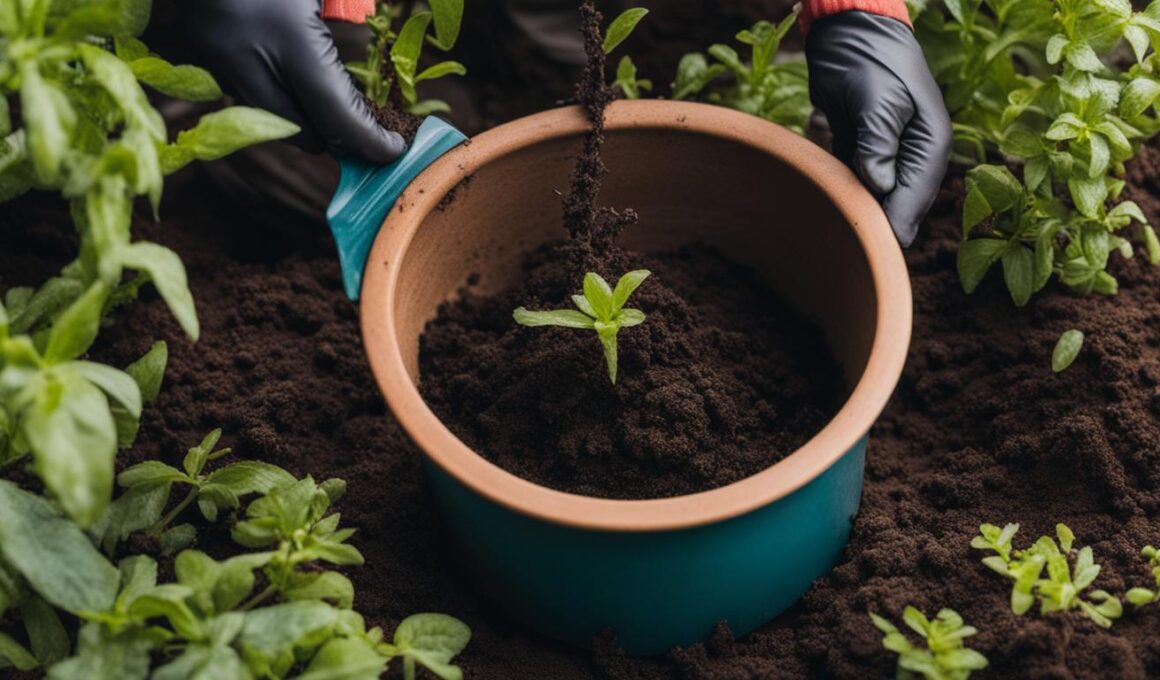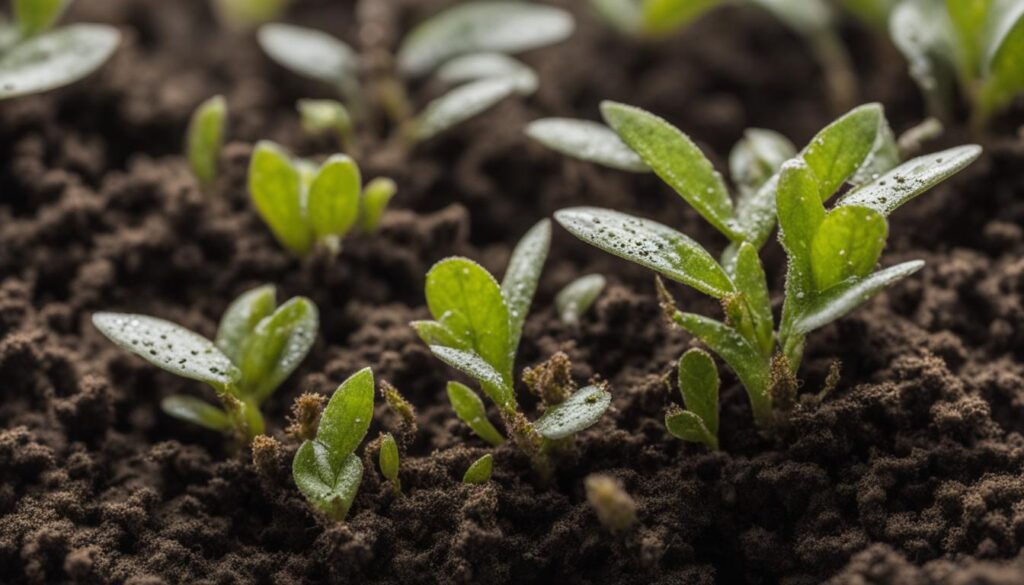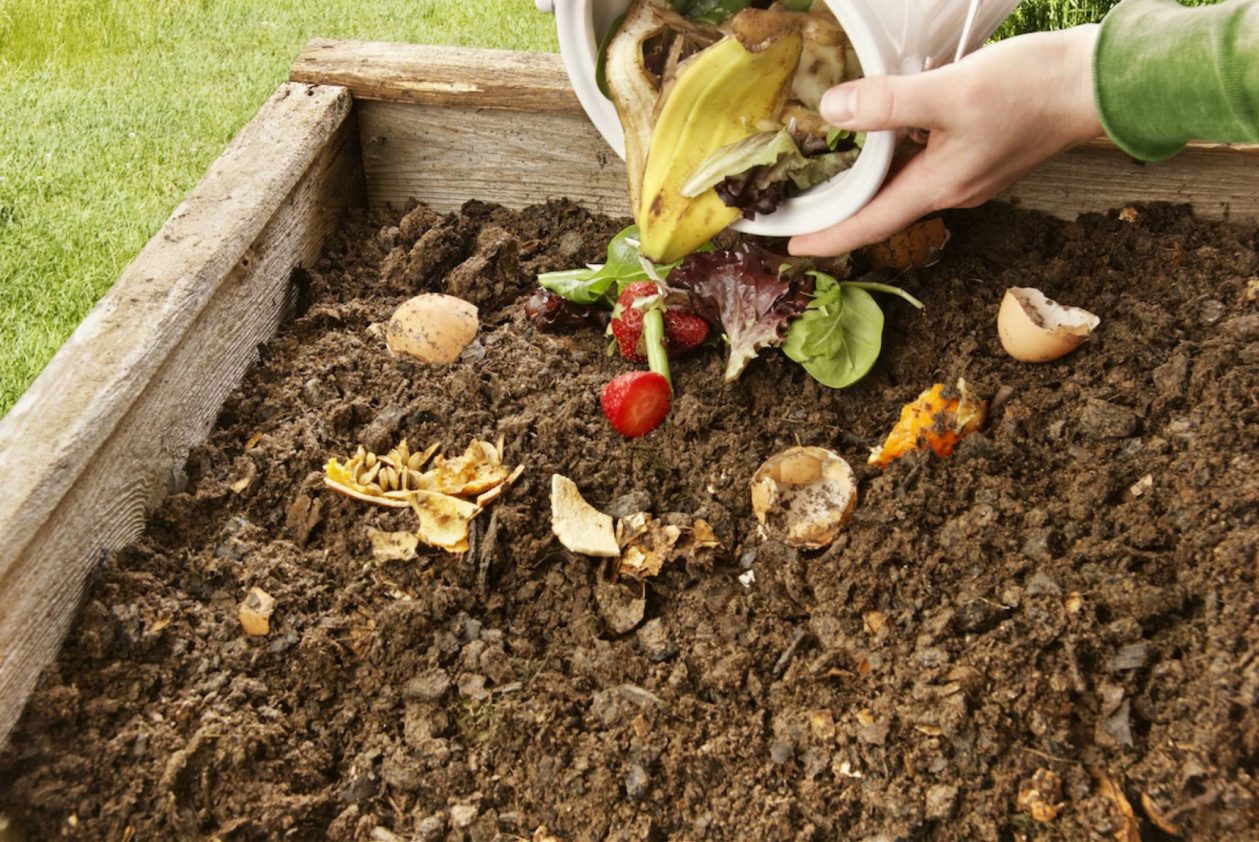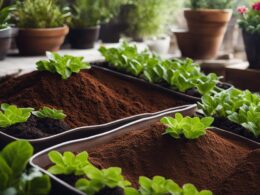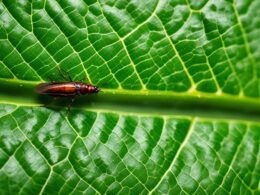Maggots can be a common problem in potted plants, causing damage to the roots and affecting the overall health of the plant. To effectively get rid of maggots and prevent further infestations, there are several steps you can take. By implementing these strategies, you can keep your potted plants free from maggots and ensure they thrive throughout the seasons. Here’s your comprehensive guide on how to eradicate maggots in potted plants.
Post Summary
- Identify signs of maggot infestation, such as wilting, yellowing, and stunted growth in potted plants.
- Inspect the soil for tunnels or rotting in the roots to confirm the presence of maggots.
- Control maggot infestations in potted plants using beneficial nematodes, pyrethrin drench, and diatomaceous earth.
- Prevent future maggot infestations by practicing proper sanitation and covering seedbeds.
- Swiftly eliminate maggots in indoor environments using salt, boiling water, diatomaceous earth, or white vinegar.
Identifying Maggot Infestations in Potted Plants
To effectively combat maggot infestations in potted plants, it’s important to first identify the signs of their presence. Maggots are the larvae of certain fly species, and they can cause damage to the roots of plants. Look out for signs like wilting, yellowing, or stunted growth in your potted plants. Additionally, inspect the soil for tunnels or rotting in the roots. These signs can indicate the presence of maggots and the need for immediate action to eliminate them.
If you notice any of these signs, it’s crucial to take action promptly. Ignoring a maggot infestation can lead to further damage to the plant and a more difficult eradication process. Identifying the presence of maggots early on allows you to implement control methods and prevent the infestation from spreading to other plants in your collection.
When inspecting your potted plant for maggot infestations, pay close attention to the roots. Root maggots are a common type of maggot that target the root system, causing extensive damage. Look for slimy or discolored roots, as well as larvae or pupae near the soil surface. These are clear indicators of a maggot infestation and should be addressed immediately to prevent further harm to your plant.
Remember, early detection is key when identifying maggot infestations in potted plants. By being vigilant and regularly inspecting your plants for signs of damage and infestation, you can take proactive measures to protect their health and ensure their longevity.
Signs of Maggot Infestation in Potted Plants
| Signs | Description |
|---|---|
| Wilting | Plants appear droopy and lackluster, even with proper watering. |
| Yellowing | Foliage turns yellow prematurely, indicating nutrient deficiency due to root damage. |
| Stunted growth | Plants fail to grow or develop at a normal rate, often remaining small and underdeveloped. |
| Tunnels in soil | Inspect the soil for signs of tunnels or rotting near the roots, indicating maggot activity. |
Controlling and Preventing Maggot Infestations in Potted Plants
Once you’ve identified a maggot infestation in your potted plants, it’s crucial to take immediate action to control the situation and prevent further infestations. There are several effective control methods and prevention tips that you can employ to eradicate maggots and safeguard the health of your plants.
Beneficial Nematodes
One highly effective method of controlling maggots in potted plants is by using beneficial nematodes. These microscopic roundworms are natural predators of pests, including maggots. When applied to the soil, the nematodes actively seek out and attack the larvae, ultimately leading to their demise. Beneficial nematodes are safe for plants, humans, and pets, making them an environmentally friendly choice for maggot control.
Pyrethrin Drench
If the maggot infestation persists despite other control methods, a pyrethrin drench can be used as a last resort. Pyrethrin is an insecticide derived from chrysanthemum flowers and is an effective tool for eliminating maggots. However, it’s important to follow the instructions carefully when using pyrethrin, as it may have adverse effects on beneficial insects and pollinators.
Diatomaceous Earth
Diatomaceous earth is a natural substance made from the fossilized remains of tiny aquatic organisms called diatoms. It is commonly used as an organic insecticide and can be effective against maggots in potted plants. When diatomaceous earth comes into contact with insects, it damages their exoskeleton and causes them to dehydrate and die. Sprinkle a thin layer of diatomaceous earth around the base of your plants to create a barrier that deters egg-laying by adult flies.
By implementing these control methods and prevention tips, you can effectively control maggot infestations in your potted plants and maintain their health and vitality.
| Control Methods for Maggots in Potted Plants | Prevention Tips for Maggot Infestations |
|---|---|
| Use beneficial nematodes to naturally control maggots | Practice proper sanitation by removing organic debris and fallen plant material |
| Apply a pyrethrin drench as a last resort for persistent infestations | Cover seedbeds with a protective barrier to prevent egg-laying by adult flies |
| Use diatomaceous earth to create a barrier that deters adult flies | Avoid overwatering plants, as moist conditions can attract flies |
Remember, prevention is key in controlling maggot infestations in potted plants. By practicing good sanitation, regularly monitoring your plants for signs of infestation, and implementing effective control methods, you can protect your plants from the damaging effects of maggots and ensure their continued growth and beauty.
Conclusion
Maggot infestations in potted plants can be a real nuisance, but with the right strategies, you can effectively eliminate them and prevent future outbreaks. By properly identifying the signs of maggot infestations and taking swift action, you can keep your potted plants healthy and free from these pests.
Implementing control methods such as using beneficial nematodes in the soil, applying a pyrethrin drench in extreme cases, and using diatomaceous earth as a deterrent can help you get rid of maggots effectively. Additionally, practicing proper sanitation measures like removing crop debris and covering seedbeds can prevent these infestations from occurring in the first place.
Remember, maintaining a healthy environment for your potted plants is key to keeping them maggot-free. Regularly inspect your plants for any signs of wilting, yellowing, or stunted growth, as these can indicate the presence of maggots. By staying vigilant and implementing effective control methods, you can ensure that your potted plants thrive year-round without the hassle of maggot infestations.
FAQ
How can I identify a maggot infestation in my potted plants?
Look out for signs such as wilting, yellowing, or stunted growth in your plants. Inspect the soil for tunnels or rotting in the roots.
What are some effective control methods for maggot infestations in potted plants?
You can use beneficial nematodes in the soil, apply a pyrethrin drench as a last resort, and use diatomaceous earth around seedlings to deter egg-laying by adult flies.
How can I prevent future maggot infestations in my potted plants?
Implement proper sanitation measures, such as removing crop debris and covering seedbeds, to prevent maggot infestations.
How can I get rid of maggots in indoor environments?
Start by sanitizing the affected area and removing any sources of filth or rotten food that may be attracting flies. You can also use salt or boiling water to kill maggots, sprinkle diatomaceous earth, or use white vinegar.
Can Maggots in Potted Plants Spread Arborvitae Disease?
Yes, maggots in potted plants can spread arborvitae disease. To prevent this, follow arborvitae disease treatment tips provided by experts. Regularly inspect plants, remove any affected leaves or branches, and treat with appropriate fungicides to stop the spread of the disease.





